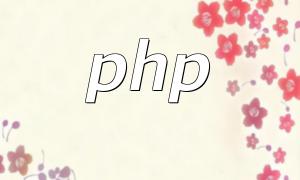In modern web development, choosing the right environment and framework is crucial. This article provides a detailed guide on configuring PHP and Zend Framework in IIS environment, ensuring a smooth development process and increased productivity.
Internet Information Services (IIS) is a web server solution provided by Microsoft, supporting various web technologies such as ASP.NET and PHP. For developers using the Zend Framework, understanding how to configure PHP on IIS is essential.
Before configuring Zend Framework, you first need to ensure that IIS and PHP are installed. Here are the simplified installation steps:
After PHP is installed, you can proceed to download and configure the Zend Framework. Follow these steps:
To make sure the beautiful URL feature of Zend Framework works correctly, you need to configure URL rewriting. Follow these steps:
By following the above steps, you should be able to successfully configure PHP and Zend Framework in IIS environment. These steps ensure that your development environment is properly set up, avoiding potential issues with configuration. Whether you're a beginner or an experienced developer, mastering these techniques will significantly boost your development efficiency. If you encounter any issues, refer to the official documentation or seek help from the community.









